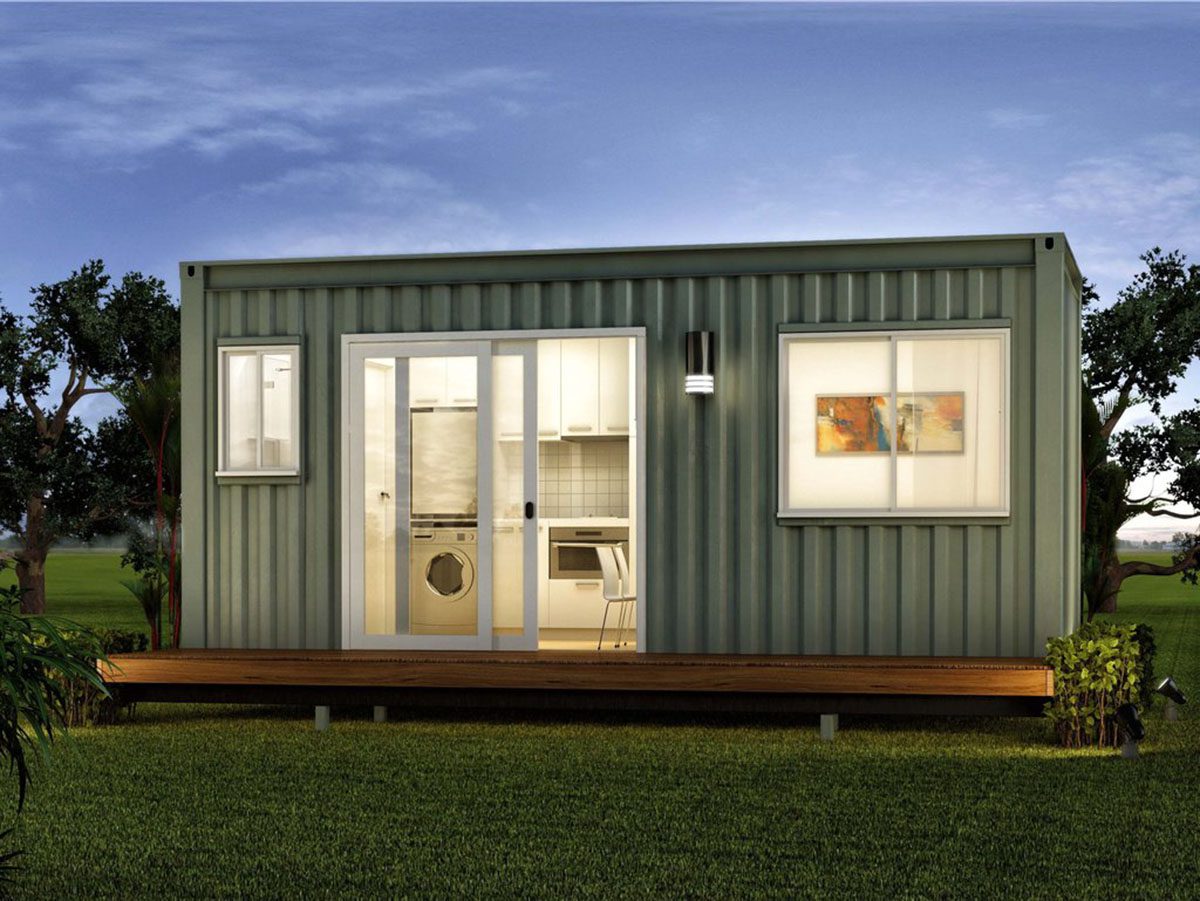
From Fees to Freedom: Richr’s Game-Changing Wealth Strategy in Real Estate, by Jason Rubin, and Glenn Orgin
Have you ever thought about why it costs 6% to…
January 9, 2024
Table of Contents:
Pros of Shipping Container Homes
Cons of Shipping Container Homes
What Types of Homes Can Shipping Containers be Used For?
Is There an Abundant Supply of Containers?
Are Shipping Container Homes Safe?
What States Allow Shipping Container Homes?
What Are Some Shipping Container Home Builders in Florida?
How Much Are Shipping Container Homes?
How Long Does A Shipping Container Home Last?
Do Shipping Container Homes Rust?
Do Shipping Container Homes Hold Value?
How Do You Insulate a Shipping Container Home?
Continue to rise in popularity, and all of the uses and innovations in repurposing these types of homes are yet to be seen. If you’re considering a container home, it’s important to understand both the pros and the cons before choosing to take on the shipping container home lifestyle.
Container homes are homes made from steel shipping containers. The containers are used like giant Lego pieces assembled modularly. The containers come in several sizes, usually 10 feet to 40 feet. The smallest container provides about 100 square feet of space. Multiple smaller containers assembled can make a massive apartment building. Also, several large containers can create a two-story home equal to about 1400 square feet. Overall, there is plenty of flexibility in design with endless container combinations for custom and do-it-yourself options.
Repurposing shipping containers into homes may not be the best use of the containers.
There may be some potential construction issues with shipping container homes.
It’s time to buy smarter. Richr gives you cash back helping you to buy the home of your dreams.
You’ll get a full-service concierge agent.
You’ll get cash back at closing.
We will support you with your title and homeowners insurance need.
Call us now on 1-844-957-4247 or Start Searching Your Home Now!
Builders can use the containers for all homes, including cabins, offices, studios, and traditional homes.
Millions of ‘out-of-service’ containers worldwide are abundantly available, which creates an excellent opportunity to repurpose and recycle them.
Anything could have been shipped in the container throughout its life ranging from harmless goods to toxic chemicals. Also, the materials used to create the container, including paint and finishes, were designed for withstanding trips across the ocean and on trains so that they may include some toxic chemicals and pesticides.
Therefore, it’s always essential to test the containers before using them for residential purposes.
A typical container is about eight feet wide and six inches tall, providing little headroom for insulation and wiring. Also, there needs to be space created for plumbing, HVAC, and other systems in a home.
Creative planning and assembly are required to make these homes feel residential.
Besides trendiness, interest in container homes is also part of a broader interest in saving money with prefabricated and modular homes. In addition, many potential homeowners are looking for lower construction and maintenance costs.
Suburban and rural areas are the best for shipping container homes. However, there are some states more open to alternative living. Florida, Texas, California, Tennessee, Louisiana, Missouri, Oregon, and Alaska are among the states that have been receptive to shipping container homes. Texas already has several container homes. Even though California is known for its challenges in approving container homes, it has been open to typical and hybrid container homes. Louisiana and Tennessee experience some of the most lenient and forward-thinking zoning regulations in the United States. Florida allows shipping container homes with some zoning requirements as well. As the desire to live in a quality, affordable home continues to grow, it’s only a matter of time before more states begin to allow shipping container homes in zoned areas.
Several container home builders service the Florida market.
The Container House, LLC- The company focuses on the residential and commercial construction of container buildings.
Smaller, more basic container homes can range between $30,000 to $80,000. Large luxury container homes built with multiple shipping containers and amenities can range from $120,000 to $250,000. Shipping container homes can sometimes cost half per square foot as traditional stick-built homes. However, it isn’t easy to compare apples to apples, and there are many factors to consider.
In addition to price, it is vital to research the permitting process in the area desired to build the home. Not all states have permitting requirements, but many do. Also, determining the labor cost for shipping the containers will be another factor in the total pricing.
Most homes last for at least 25 years, but proper care and maintenance can make them last much longer. Rust is the biggest issue with container homes. Homeowners need to inspect their containers regularly to ensure they are in good shape. Any problems should be treated and repaired so they do not spread to all containers.
The containers are made of metal so, therefore, very much have the possibility of rusting. Most containers are manufactured with alloys that form a surface level of rust to keep rust from penetrating the container homes further.
However, the climate where a shipping home resides, a wet or dry climate, will have a long-term impact and may contribute to a rust issue in the house.
Most shipping containers retain their value, similar to a traditional home. They are easy to resell because they can be loaded onto a truck and relocated elsewhere reasonably quickly. Homebuyers must determine if the house was initially conditioned in the factory for their climate. Changes may need to be made to the paint and other components to meet the new weather conditions.
Shipping container homes can be challenging to insulate due to the shape of the container being very narrow. Therefore, a thin insulation layer with a high R-value per inch is often used to keep as much interior living space as possible.
The typical material is polyurethane spray foam. The foam is air-tight and highly effective; however, the agent used to apply the foam can create an abundance of greenhouse gases.
Most shipping containers are reinforced at their corners, but the roof will always be an issue when building a new container home.
This is because the top of a container cannot bear the weight of heavy weather issues such as snow or heavy rainfall.
The roof of a container home can be built to look like any other type of roof of a standard house. There are several styles, but pitched roofs, flat roofs, and roof terraces are most common.
Pitched roofs slope downwards and are found in areas with heavy rainfall and snow. They are the most common, and examples of pitched roofs are gables, hip, mansard, gambrel, and skillion.
Flat roofs will be the fastest and least expensive option because they are easy to construct, but they can be more costly in the long run due to maintenance. In addition, there needs to be the correct pitch on the roof for adequate drainage when it rains. A unique option may be a living roof made of plants and greenery for a more beautiful and pleasing look to the home, offering insulation for natural cooling.
Roof terraces offer an option for a creative space made of flat terrain on top of the roof to give more space to the home.
The decks can include gardens, areas for eating, grilling, entertaining, and lounging.
It’s essential to pay attention to the roof and overall insulation of the container home. The insulation needs to be considered based on the climate in which the house will be, focusing on the construction of a well-insulated wall and building outward for more wall thickness. Environmentally sustainable insulation is also available.
There are several pros to owning a container home, such as short construction time and predictable pricing, similar to all prefabricated and modular home types. Container homes also benefit from having a shipping system that is in place worldwide.
Several unique uses of the containers beyond homes include markets, hotels, fairs, and mobile events. Before a homebuyer purchases a modular container home, it is crucial to research zoning, building techniques, and climate requirements to make it as durable and long-lasting as possible.
If you’re looking to buy or sell a house and would like to discuss your option, Richr can help you!
Our fully licensed Concierge Team is here to questions and provide free, objective advice on how to get the best outcome with your sale and purchase.
Ready to get started?
Call us now on 1-844-957-4247 or enter your basic info
below. Our concierge Team will be in touch shortly to help.
Remember, this service is 100% free and there’s never any obligation.

If you want the Richr team to help you save thousands on your home just book a call.
 Book a call
Book a call